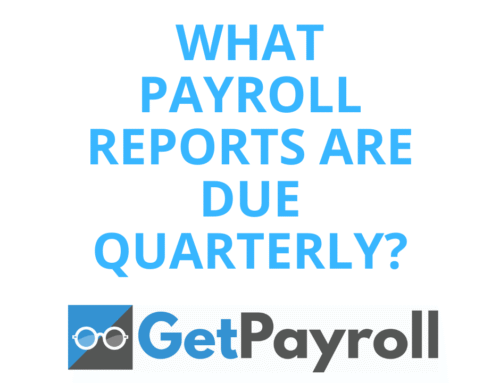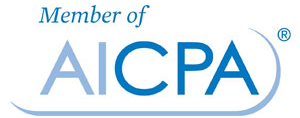
Charles Read, CPA, USTCP, IRSAC
President/CEO GetPayroll
Find me on LinkedIn
Pay transparency refers to how forthcoming employers are about salary and pay information, as well as how easy it is for employees to access information about the compensation of their colleagues. There is a growing movement in American society to increase pay transparency, particularly as the US continues to lag behind other developed countries in closing the gender pay gap. To address this, lawmakers have introduced more legislation to require employers to disclose salary information at various stages, with some states banning employers from asking about an applicant’s pay history and others requiring employers to allow salary discussions among employees. Failure to comply with these laws can result in fines and potential lawsuits. Some states, such as Colorado and Connecticut, have already enacted or plan to pass pay transparency laws covering a significant portion of the civilian workforce. While pay transparency measures may help address the gender pay gap, there have been some drawbacks, such as companies excluding residents of certain states from applying for remote jobs and extensive salary ranges for job openings. Despite the potential benefits, it is important for employers to carefully consider the potential negative consequences before adopting pay transparency measures.
What is Pay Compression?
Pay compression sometimes referred to as salary or wage compression occurs when long-term employees in the same role are paid less than new hires in the same job. This phenomenon is often a result of pay transparency measures.
The negative effects of pay compression can include decreased morale and increased staff turnover. Research conducted by Zoe B. Cullen and Bobak Pakzad-Hurson on four million workers in pay transparency states showed a 2% decrease in overall pay, as managers avoided offering high salaries to new hires to prevent costly renegotiations with existing employees.
Moreover, pay compression induced by transparency can exacerbate hidden pay inequality. Employees who realize that negotiating pay raises is ineffective may resort to seeking idiosyncratic deals ( i-deals), such as additional training or health benefits. These idiosyncratic deals negotiated with supervisors can further perpetuate invisible inequality, as many workers are unaware of their colleagues’ successful negotiations.
To ensure compliance with pay transparency laws and prevent pay compression, businesses can take several measures. Firstly, they should ensure compliance with laws and regulations, as non-compliance can result in penalties and legal action.
Conducting a pay study can help to identify whether staff are being paid competitively and equitably. Pay gaps can be closed by increasing pay for existing employees to prevent new hires from being paid more.
Establishing transparent pay ranges can ensure that the link between pay and performance is clear and objective. Managers should also be trained to effectively communicate with employees on pay issues.
Additionally, including i-deals and bonuses in reward structures can prevent the benefits from being hidden and accessible to only a few. Updating job postings with salary information can also increase transparency and promote pay equity.
New Pay Laws in 2023
In 2023, the United States is continuing its shift towards pay transparency through the enactment of updated pay laws in various states, including:
- California’s Senate Bill 1162, which went into effect on January 1, 2023, requires all employers to provide a pay scale to employees upon request and mandates that employers with 15 or more workers include salary ranges in job postings. Additionally, employers must keep records of salary histories and job titles.
- New York State recently established a pay transparency law, set to take effect in mid-September of 2023, that requires employers with four or more staff members to disclose the salary or salary range for each job advertisement, promotion, and transfer that an employee can or will perform in, or partly, the State of New York. Employers must also maintain records of salary histories, job titles, promotions, transfers, and job descriptions (if they exist).
- Rhode Island’s Pay Equity Act, which went into effect on January 1, 2023, requires employers to share pay ranges during the application, upon hire, when changing jobs, and upon request.
- Washington’s Equal Pay and Opportunities Act, also taking effect on January 1, 2023, mandates that employers with 15 or more workers disclose the compensation for each job opening in every job posting and share the wage scale, including the starting and general range and other compensation and benefits.
In conclusion, in an effort to combat the persistent gender pay gap, numerous states and cities have implemented pay transparency laws that generally prohibit employers from inquiring about candidates’ salary history, mandate the inclusion of salary ranges in job offers, and permit salary discussions among employees. Failure to comply with these laws can result in penalties and lawsuits. While pay transparency can foster employee trust and appeal to prospective hires, it may also lead to pay compression. To ensure the successful implementation of pay transparency, contact our HR representative to talk about your company.
Interested in learning more about GetPayroll services?
Are you shopping for new payroll services? Schedule a demo to see if GetPayroll is right for your business.
If you are a current GetPayroll customer (yay!), take a look at some of our new services that may help streamline your business operations.
Comments and Suggestions
Don’t forget to leave us a comment below and tell us what you think. If you have any requests or suggestions, we’d love those too!










